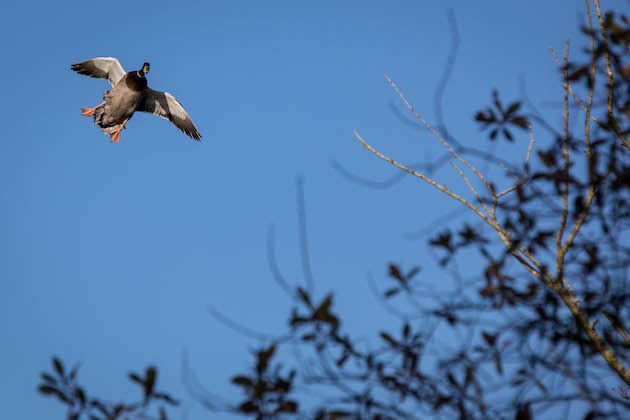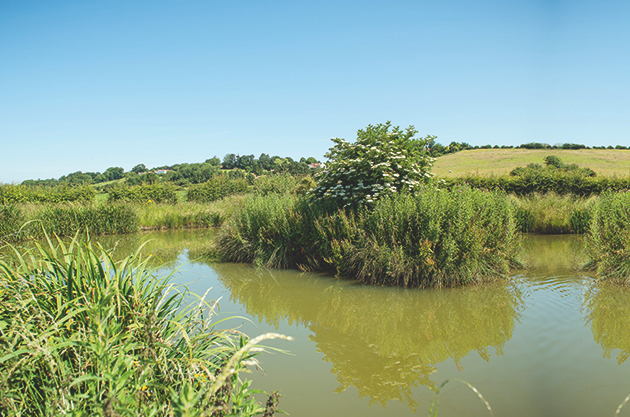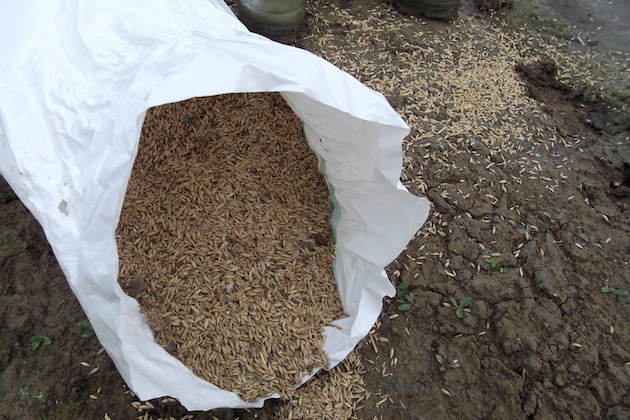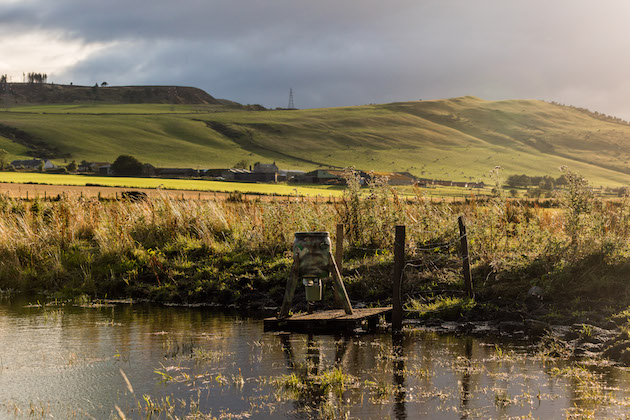Techniques for mastering a flightpond at dusk
Graham Brown’s student Giacomo Drax is lucky enough to have access to a flight pond that he occasionally shoots with…
Win CENS ProFlex DX5 earplugs worth £1,149 – enter here
 Usd 3 march 19 flight pond
Usd 3 march 19 flight pond
I like ducks. While geese are masterly and waders noble, the duck is affable. My warm feelings for them may sound incongruous. Much of my spare time is spent trying to place myself on the foreshore and marsh so that I can shoot one, preferably two. That being said, the duck is a bird of beauty and wonderment, a worthy target for any Gun. Its meat is one of the finest treats nature’s larder can provide — barring shovelers, which taste of muddy fish.
For many the idea of wildfowling, with its rising in the dark to venture miles out on to treacherous estuarine mud in hopeful pursuit of duck, is akin to masochism. However, those less hardy souls still yearn to test their shooting skills and digestive system on wildfowl and they can do so thanks to flightponds.

A flightpond is an inland piece of water
Anyone who claims they are wildfowling when they are sitting by a flightpond should be treated with wholehearted derision; they are duck shooters. There is nothing wrong with being a duck shooter, but there is a gulf of difference between them and wildfowlers. A flightpond is an inland piece of water. It is either man-made or an existing lake, scrape, pool, pond or agricultural reservoir.
The introduction of water to any piece of land is of amazing benefit to a multitude of flora and fauna. On one flightpond I have created, the sheer diversity of new species to the area since its construction is marked.
I have detailed notes on all
species spotted there and, to name but a few, snipe now sip in the muddy margins, hobby falcons stoop on the dragonflies, grey partridges drink from the edges and mallard, coot and teal call it home. This pond is sited 20 miles in land from the coast and is an invaluable habitat.
I do, however, have a major concern with the rise in popularity
of flightponds being constructed or fed up and commercially shot in areas that abut estuaries and foreshore. These ponds quickly become magnets to coastal ducks, which will understandably shun a hard-won wild feed on the saltings in favour of a plentiful supply of barley that the pond owner provides.

Are coastal flightponds luring wild duck away from their natural habitat on the foreshore?
Some owners of these coastal flightponds take a considered and sparing harvest of the wild ducks they have encouraged to fly to their own tame waters. But there are first-hand reports of large numbers of teal, wigeon, mallard and pintail being shot on some coastal ponds. It appears little or no regard is paid that these are wild ducks, not reared. I believe this is greed, unsustainable and goes against all that wildfowlers and conservationists hold dear.
Fowlers complete a bag return at the season’s end. It gives a good indicator to the health of species, migratory patterns and a multitude of other data for ornithologists and conservationists. I am certain that the keepers of coastal flightponds do not provide this information.
I wonder if these flightponds, along with an exceptionally mild winter, could be partly responsible for the marked low numbers of duck that we have seen on much of the East Anglian foreshore this season? To court controversy, I would be in favour of coastal flightponds having an American-style bag limit imposed.

Ducks will shun hard-won wild feed in favour of the feast the pond owner provides
If a wildfowler achieves a sizeable bag, it is due to his fieldcraft, in- depth knowledge and hefty chunk of luck and perseverance. The coastal flightpond’s big bag is solely thanks to a few tons of barley.
Ultimately shooting is about filling the pot, whether you are fowling, walking-up a rough hedge with your spaniel or standing on a peg on a 300-bird driven pheasant day. The sporting element of shooting — or, more to the point, the skill-testing component — should not be the main factor, but a pleasant addition to hunting your own dinner.
Therefore ethically flightponds should be managed in such a way that they provide clear opportunities to shoot a bird cleanly on the wing. If the surrounding flora is so ill-managed that only sky-high or fleeting snap shots bring a bird to the hand, you merely own a pond, not a flightpond. If you are truly hunting for the pot, it is completely ethical to shoot a bird on the water. I cannot see why blazing away at a duck in the twilight 60 yards up is considered sporting, yet the sure-fire bag-filling waiting until it lands on the water is considered tantamount to sitting down during the national anthem.
We have to accept that on occasion our skills may be slightly off and winged birds are an unfortunate result. It is far better to put the odds firmly in your favour of a clean kill. How unsporting, some may say, but surely this is the ethical thing to do?

Well designed, well managed and sparingly shot, flightponds can be true oases
Another issue I have with some flightponds is with the releasing of reared ducks. I am repelled by the sight of beaters armed with flags, surrounding a pond and sounding like French revolutionaries in a bid to get reluctant early-season flyers into the air. If you have invested time and money in creating a biodiverse habitat, wild ducks will find you.
Doubtless a few reared birds on your pond will encourage more wild ducks to use it; after all, the humble call duck was bred for this very purpose. However, if reared ducks are to be part of your day’s shooting — be it a duck drive or the Guns walking-up the pond — surely it is unethical to attempt it until the depths of the season? While mallard may well be in feather in the early season, they are mentally immature and almost as tame as those on the village pond.
I visited a number of driven shoots last season and all of those who had ducks in their day presented extremely challenging, sporting birds. Little surprise, then, that all of these shoots put habitat creation and management as their lead driver, not simply putting down a few hundred reared mallard and stuffing food into them. The result is that the ponds were filled with wild birds and are only shot over twice a season at most.
Shooting wild ducks from a pond is a sporting challenge; shooting reared ducks off the end of your barrel as they circle to come back to their home pond definitely isn’t.
Graham Brown’s student Giacomo Drax is lucky enough to have access to a flight pond that he occasionally shoots with…
Back in the 1970s I made a couple of life-changing decisions. I resigned from a secure job in banking to…
I am not decrying flightponds in one broad brush stroke. Well designed, well managed and sparingly shot, they can be true oases. However, for those who lure wild ducks to their coastal firing ranges or fill ponds with a multitude of reared pets, I ask you to look at the ethics and reconsider whether shooting really is the sport for you.
Get the latest news delivered direct to your door
Discover the ultimate companion for field sports enthusiasts with Shooting Times & Country Magazine, the UK’s leading weekly publication that has been at the forefront of shooting culture since 1882. Subscribers gain access to expert tips, comprehensive gear reviews, seasonal advice and a vibrant community of like-minded shooters.
Save on shop price when you subscribe with weekly issues featuring in-depth articles on gundog training, exclusive member offers and access to the digital back issue library. A Shooting Times & Country subscription is more than a magazine, don’t just read about the countryside; immerse yourself in its most authoritative and engaging publication.

